Fish Yefdw – Is your beautiful betta fish looking unhealthy? As a dedicated betta parent, watching your vibrant friend lose his luster and vitality can be heartbreaking. Although bettas are relatively hardy fish, they are still susceptible to a variety of betta fish diseases that can quickly turn deadly if not promptly diagnosed and treated.
But don’t panic! With careful supervision, some basic knowledge, and a little bit of attention, you can help your betta overcome illness and get his tank back on track in no time.
Because when it comes to betta fish diseases, prevention is better than cure. Providing a clean, stress-free environment with optimal water conditions is the best way to keep your finned friend in tip-top shape. However, even with perfect care, illness can still occur.
That’s why being able to quickly identify betta fish diseases and take prompt action is an essential skill for any responsible betta fish keeper. From fin rot and velvet rot to dropsy and bladder disease, we’ll arm you with all the knowledge you need to be a proactive and empowered advocate for your betta’s health.
So grab a notebook, put on your detective hat, and get ready to become a bonafide betta health expert! Your other fish are counting on you to keep them happy, healthy, and vibrant for years to come. Let’s embark on this journey into the world of betta disease together!
Common Signs Your Betta Fish is Sick
Before we dive into the specific betta fish diseases, let’s cover some general signs that something is off with your fish’s health. Be on the lookout for:
- Lethargy, inactivity, hiding
- Loss of appetite, spitting out food
- Labored breathing, gasping at the surface
- Clamped, torn, or ragged fins
- Faded, muted color (especially in males)
- Bloating, swelling, protruding scales
- White spots, fuzzy patches, lumps on the body
- Scratching or rubbing against objects
Noticing any of these? Don’t assume your betta is just having an off day. While not always a sign of disease, it’s best to investigate further if symptoms persist beyond a day or two. The sooner you intervene, the better the chances of a full recovery.
Preventing Betta Fish Diseases Starts With Proper Care
We know you’re eager to learn about the different betta fish diseases and treatments, but let’s first talk prevention. Providing a clean, stress-free environment is hands-down the best way to avoid illness in the first place.
The Ideal Betta Fish Tank Setup
- 5 gallons minimum, 10+ is better
- Filter to maintain water quality
- Heater set to 78-80°F
- Gentle water flow, bettas dislike strong currents
- Plenty of hiding spots and resting places near the surface
- Soft, sandy substrate or smooth gravel
Maintaining Water Quality is Key
Poor water conditions are the #1 culprit behind most betta fish diseases. Ammonia, nitrite, and nitrate can quickly build to toxic levels in smaller tanks. But how do you keep things squeaky clean?
- Perform weekly water changes of 25-50%
- Vacuum the substrate to remove debris
- Rinse filter media in old tank water
- Test water parameters regularly
- Use a dechlorinator to treat tap water
Feed a high-quality pellet or frozen food, and avoid overfeeding. Uneaten food sinks and decays, spiking ammonia. Aim for 2-3 small meals per day, only what your betta can finish in 2 minutes.
Identifying and Treating Common Betta Fish Diseases
Even with perfect care, betta fish diseases can still strike. Let’s break down the usual suspects and how to show them who’s boss.
1. Fin & Tail Rot

Fin rot is probably the most common ailment in bettas. It starts at the edges of the fins and works its way inward, leaving a trail of dead tissue that resembles rotting away – hence the name.
- Causes: Poor water quality, injury, stress, overcrowding
- Symptoms: Discolored, frayed, or tattered fins that progressively get shorter
- Treatment: Frequent water changes, aquarium salt, antibiotics (Erythromycin, Tetracycline, Trimethoprim)
Luckily, when caught early, fin rot is very treatable and fins will regrow with some TLC. In more severe cases, it can progress into body rot which requires more heavy-duty meds.
2. Ich (White Spot Disease)
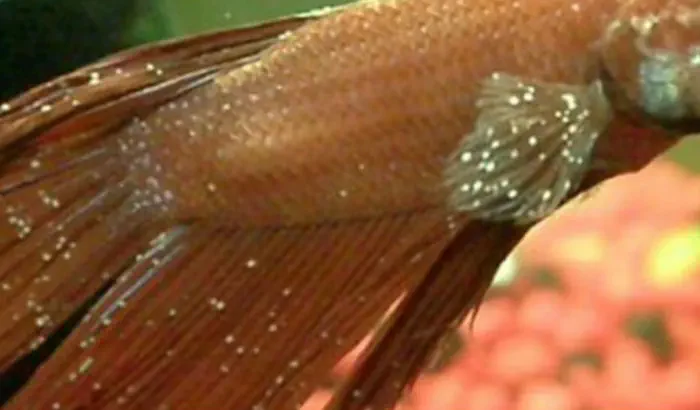
Ich is another extremely common betta fish disease, caused by a parasite. It’s highly contagious so swift treatment is a must. Ich is also called white spot disease for good reason.
- Causes: Stress, poor water quality, sudden temperature changes, new fish or plants
- Symptoms: Tiny white dots sprinkled on the body, head, and fins, scratching against objects
- Treatment: Gradually raise water temp to 86°F, add aquarium salt, use Ich-X or copper-based meds
Ich is not usually fatal if treated promptly, but it spreads quickly and can wreak havoc on the gills. Quarantine any new fish for 2 weeks before adding to your main tank.
3. Velvet
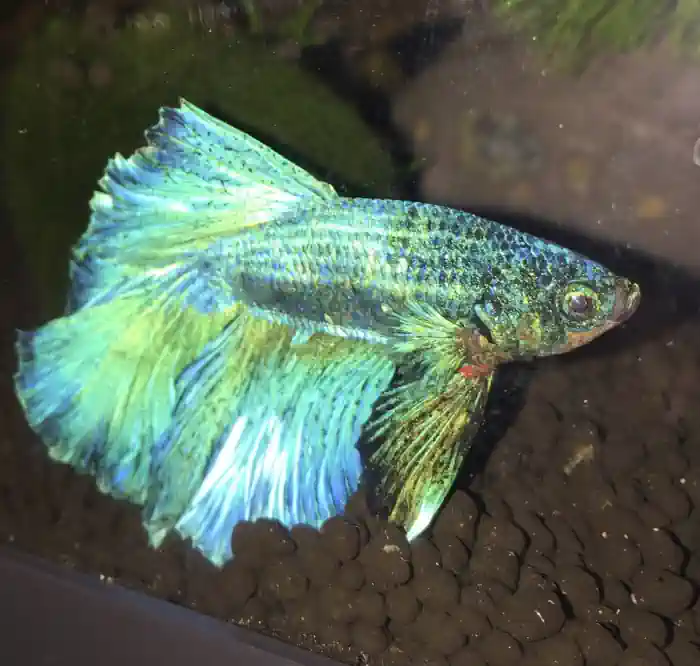
Often confused with Ich, velvet is another parasitic infection but is characterized by a dust-like golden or rusty film on the betta’s body. It’s difficult to diagnose until the advanced stages.
- Causes: Stress, poor water conditions, low temperature
- Symptoms: Powdery yellow/rust colored coat, clamped fins, lethargy, loss of appetite, scratching
- Treatment: Dim tank lights, gradually raise temp to 82-85°F, treat with copper sulfate or Malachite
GreenVelvet is highly contagious so isolate sick fish immediately. Thoroughly clean the main tank and treat all fish, even if not showing symptoms. This is a very serious disease that can quickly turn deadly.
4. Popeye
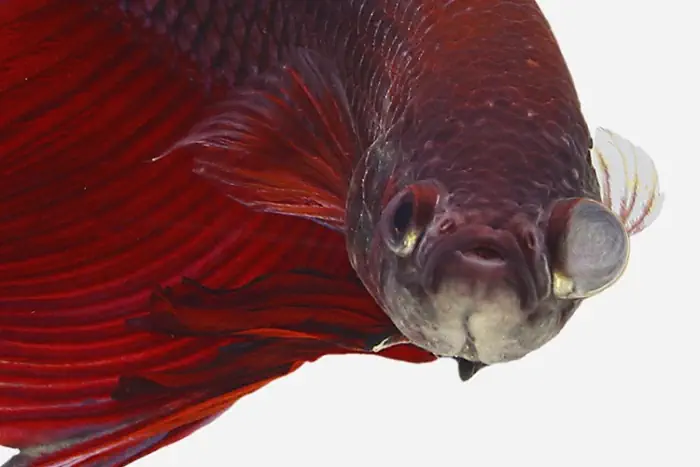
Popeye causes the betta’s eyes to bulge out of their sockets and become swollen and cloudy. One or both eyes may be affected. While unsightly, popeye is generally pretty easy to treat when caught early.
- Causes: Bacterial infection, injury, gas embolism, tumors
- Symptoms: Protruding, cloudy eyes, lethargy, loss of appetite
- Treatment: Isolate fish, treat with Epsom salt or antibiotic eye drops, address poor water quality
In rare cases, popeye may be a sign of more serious issues like tuberculosis. If you see no improvement after 5-7 days of treatment, consult a vet as the swelling could be permanent.
5. Swim Bladder Disorder

Swim bladder disorder occurs when the organ that controls a betta’s buoyancy is compromised. This makes it difficult for them to maintain a normal swimming position and often sends them bobbing to the surface.
- Causes: Constipation/bloating, bacterial infection, birth defects, injury
- Symptoms: Struggling to stay upright, floating or sinking, curved back, bloated belly
- Treatment: Fast for 24-48 hours, feed cooked, skinned pea, use Epsom salt bath
Most cases of swim bladder are caused by constipation or digestive issues due to overfeeding or low quality food. Fasting and feeding deshelled peas will often do the trick. If symptoms persist, an antibiotic may be needed.
6. Columnaris (Cotton Mouth)

Columnaris is a nasty bacterial infection that causes white, cotton-like patches on the mouth, gills, and body. It progresses rapidly and can be fatal within 48 hours if not urgently treated.
- Causes: Flavobacterium columnare bacteria, poor water quality, overcrowding, injuries
- Symptoms: Gray-white fluffy patches on the mouth, body, and fins, lethargy, loss of appetite
- Treatment: Isolate fish, lower water temp to 75°F, treat with antibiotics or potassium permanganate
Columnaris is often called “cotton mouth disease” and is frequently misdiagnosed as a fungal infection. Time is of the essence with this one, so when in doubt, start treatment right away.
Wrapping Up
We know it’s stressful when your betta buddy isn’t feeling their best. But by familiarizing yourself with these common betta fish diseases, their causes, and cures, you’re now better equipped to be a proactive, knowledgeable betta owner.
When in doubt, test your water and do a water change. Seriously, this will solve a good chunk of problems before they start. Quarantine new fish, keep the tank clean, and feed a varied, high-quality diet.
And of course, always closely observe your betta for unusual symptoms or behaviors. Prompt treatment is often the deciding factor between a betta that bounces back to their colorful, feisty self or one that succumbs to disease.
Here’s to many more happy, healthy years with your underwater pal! Stay vigilant, act quickly, and don’t forget to enjoy all the quirky antics and vibrant beauty these special fish bring to our lives.

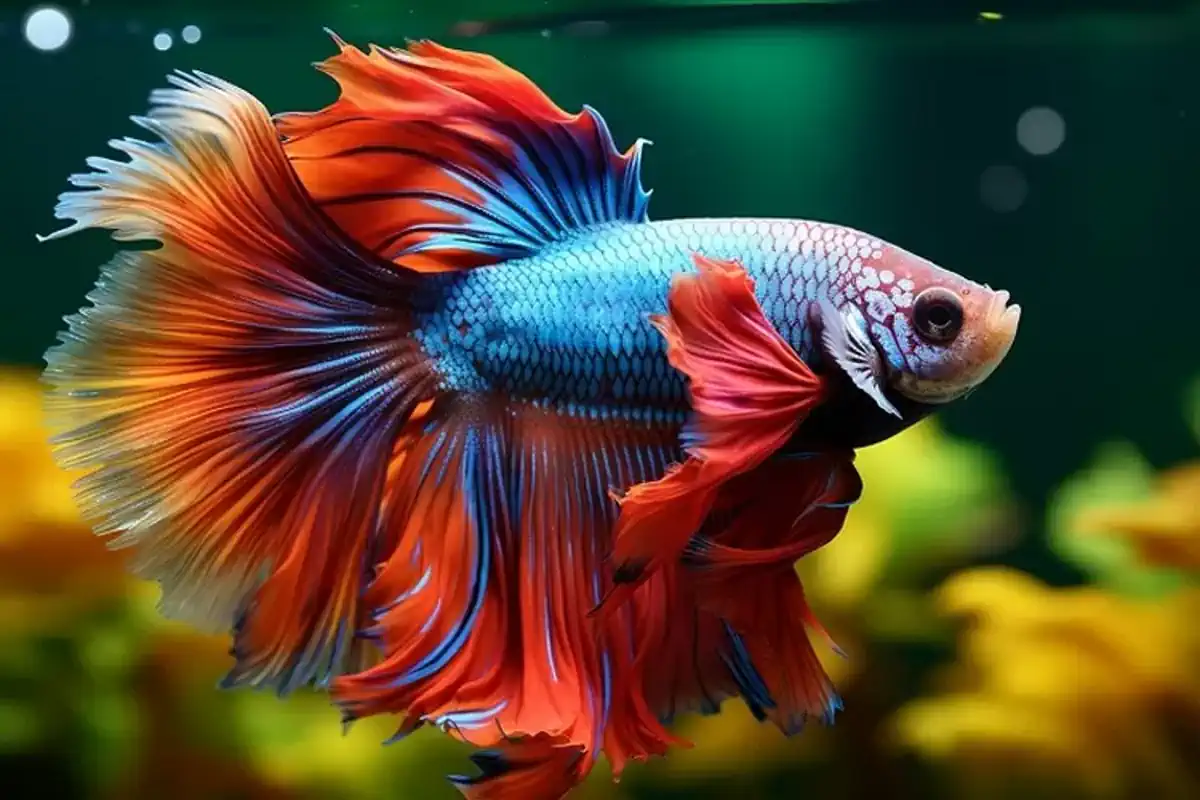

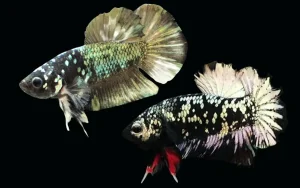
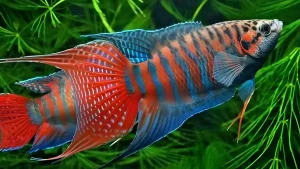




Leave a Comment